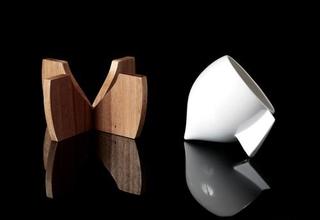Introduction to the characteristics and varieties of Brazilian Coffee with excellent Flavor
Brazil is located in the southeast of South America, spanning 35 degrees west longitude to 74 degrees west longitude, 5 degrees north latitude to 35 degrees south latitude. It is bordered by the South Atlantic Ocean to the east and by any country in South America to the north, west and south (except Chile). It is bordered by Guyane française, Suriname, Guyana, Venezuela and Colombia to the north, Peru and Bolivia to the west, and Paraguay, Argentina and Uruguay to the south. The coastline is approximately 7400 km long. The breadth of the territorial sea is 12 nautical miles, and the proven iron ore reserves in the 188 nautical miles of the territorial exclusive economic zone are 33.3 billion tons, accounting for 9.8% of the world's total reserves, ranking fifth in the world; the output is 355 million tons, ranking second in the world; and the export volume is also among the highest in the world. Brazil is rich in 29 kinds of mineral reserves, nickel reserves of 6 million tons, accounting for 4.0% of the world's nickel reserves, mainly distributed in Goiás and Minas Gerais. Manganese, bauxite, lead, tin and other metal reserves account for more than 10% of the world's total reserves. Niobium ore reserves have been proved to be 4.559 million tons, which is enough for 800 years of global use according to current consumption. In addition, there are rich chromium ore, gold ore and asbestos ore. The proved reserves of coal mine are 10.1 billion tons, but the grade is very low. Since 2007, Brazil has successively discovered large oil and gas fields along the southeast coast. It is estimated that the oil reserves will exceed 50 billion barrels, and it is expected to rank among the top ten oil countries in the world. Forest cover is 57%. timber reserves are 65.8 billion cubic meters. Brazil is rich in water resources, with 18% of the world's fresh water, 29000 cubic meters per capita, and a water reserve of 143 million kilowatts per year. Brazil is derived from the Brazilian redwood, which thrives on the Brazilian coast. Brazil is called "Portugal pau-brasil" in Portugal, where brasil means red as charcoal fire, and is composed of Latin brasa (meaning "charcoal fire") and suffix-il (from-iculum or-ilium). The deep red dye produced by Brazilian mahogany attracted the attention of the European clothing industry and caused early commercial development in Brazil. During the 16th century, indigenous peoples harvested large quantities of Brazilian redwood, which was sold to Europe by European traders (mostly from Portugal but also from France
Brazil has many large farms, operating endless coffee plantations, they use machines to harvest, and use machines to dry, automated efficiency is very high, as if coffee as a general agricultural material, completely abandoned flavor and disregard. As a result, many specialty coffee companies simply do not sell Brazilian beans, lest they demean themselves. Brazilian santos still occasionally appear in select coffee shops, but they are bourban santos rather than the cheaper flat bean santos. Santos is a descendant of the Bourbon species, hence the name of the Port of Santos exit. This coffee tree in the first three or four years of the beginning of the fruit, the beans produced small and curved, excellent flavor, known as "Bourbon Santos." After that, the beans become larger, flat shape, no longer curved, become "flat bean Santos", flavor has been much less than before. In Taiwan, Brazilian coffee can be seen everywhere, but mostly flat beans Santos, in fact, Brazil still has good quality coffee beans, will be sold to the market under its own name, no longer known as "Brazilian coffee". Some farms still retain the old bourbon seed, the raw beans are small in size, curved, red in the center line, and marked with a red center. Bourbon beans taste full, strong aroma, like drinking old wine in general, very worth a try Brazil in the natural conditions, in the tropical region, the northern tropical rain forest climate, hot and humid all year round, suitable for tropical crops growth, coffee trees for sunny crops, sufficient sunlight for its growth conditions. Historically, Brazil has been a Portugal colony for a long time. In order to meet the needs of Western Europe, Brazil has been planting single crops for a long time and developing tropical plantation economy. Therefore, coffee in Brazil has been its pillar industry for a long time. From the market point of view, coffee and its processed products are rich in caffeine and have an exciting effect. They play an important role in the working group dominated by mental workers, so they play a huge role in modern society, so the market is broad. In summary, Brazil coffee production for the world's first Brazilian coffee, refers to coffee produced in Brazil. There are many types of Brazilian coffee, and like other Arabica coffees, Brazilian coffee is called "Brazils" to distinguish it from "Milds" coffee. The vast majority of Brazilian coffee is unwashed and sun-dried, and is classified according to the state of origin and port of shipment. Coffee is produced in 17 of Brazil's 21 states, but four of them produce the most, accounting for 98 percent of the country's total: Parana, Sao Paulo, Minas Gerais and Espirito Santo. Parana in the south produces the most, accounting for 50 percent of the total

Important Notice :
前街咖啡 FrontStreet Coffee has moved to new addredd:
FrontStreet Coffee Address: 315,Donghua East Road,GuangZhou
Tel:020 38364473
- Prev

The taste of Nicaraguan boutique coffee is round and balanced. Introduction to the characteristics of manor production area.
Columbus arrived here in 1502 and reached the east coast of Nicaragua. In 1522, Spanish colonists began to conquer the region. The cities of Granada and Leon were founded in 1524. From then on, Nicaragua became a Spanish colony and came under the jurisdiction of the Governor's Office of Guatemala. The city of Leon developed into a political and cultural center; Granada became a commercial and agricultural center. In the later period of colonial rule
- Next

Introduction to the characteristics and varieties of the coffee producing area of Bancimaji Coffee Manor in Ethiopia
Suitable for baking: Full city / Espresso is recommended to enter the second explosion, at this degree there will be a very obvious chocolate flavor, if baked a little deeper, it is quite suitable to be mixed into the Espresso formula. It takes a mature period after baking, so you will get the most complete taste after three or four days. The Bugisu producing area of northern Uganda near the Kenyan border.
Related
- Detailed explanation of Jadeite planting Land in Panamanian Jadeite Manor introduction to the grading system of Jadeite competitive bidding, Red bid, Green bid and Rose Summer
- Story of Coffee planting in Brenka region of Costa Rica Stonehenge Manor anaerobic heavy honey treatment of flavor mouth
- What's on the barrel of Blue Mountain Coffee beans?
- Can American coffee also pull flowers? How to use hot American style to pull out a good-looking pattern?
- Can you make a cold extract with coffee beans? What is the right proportion for cold-extracted coffee formula?
- Indonesian PWN Gold Mandrine Coffee Origin Features Flavor How to Chong? Mandolin coffee is American.
- A brief introduction to the flavor characteristics of Brazilian yellow bourbon coffee beans
- What is the effect of different water quality on the flavor of cold-extracted coffee? What kind of water is best for brewing coffee?
- Why do you think of Rose Summer whenever you mention Panamanian coffee?
- Introduction to the characteristics of authentic blue mountain coffee bean producing areas? What is the CIB Coffee Authority in Jamaica?

